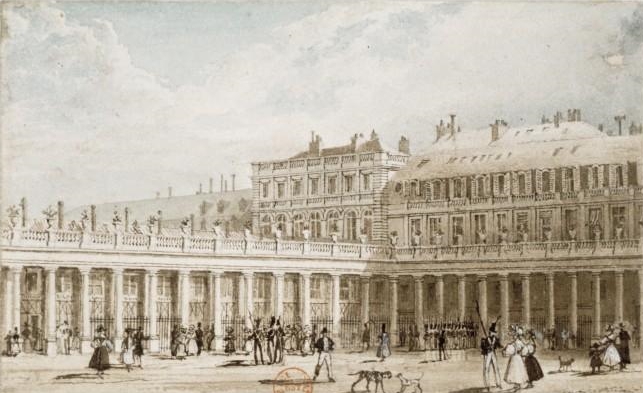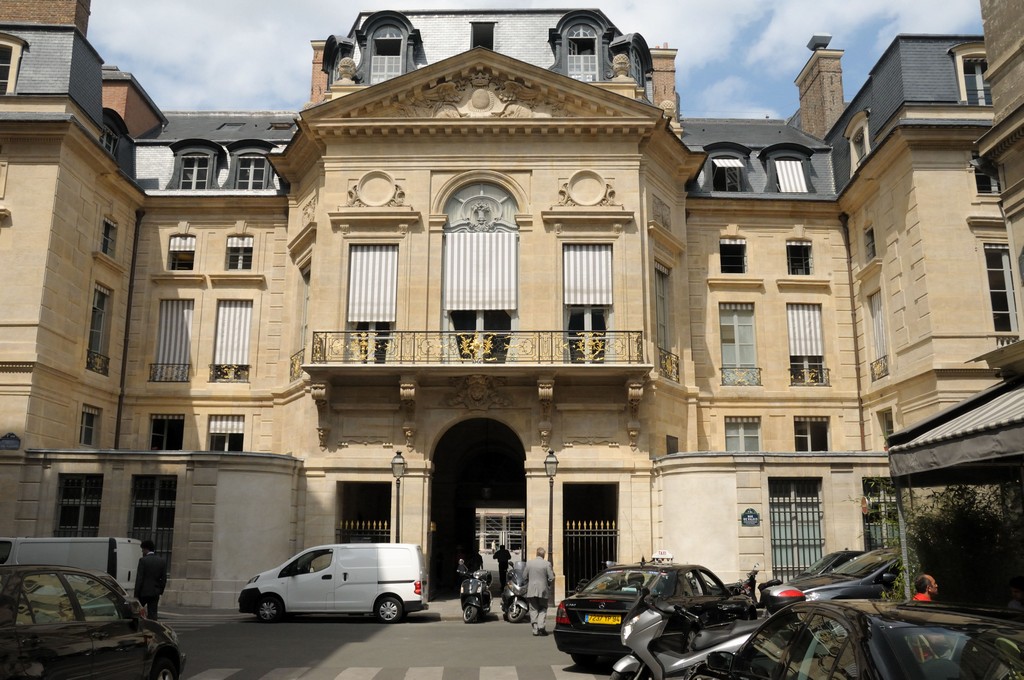
The Comédie-Française
Photo: © Antonio Ca' Zorzi (2011)
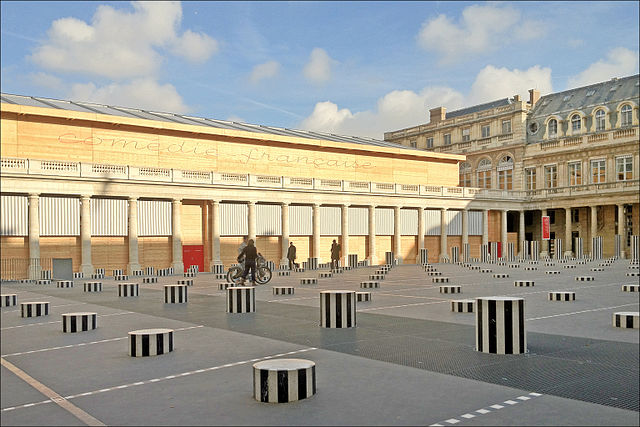
The Théâtre éphémère de la Comédie-Française in the Galerie D'Orléans, during the restoration of the main building in 2012-2013
Photo: Jean-Pierre Dalbéra (CC), Wikimedia & Flickr
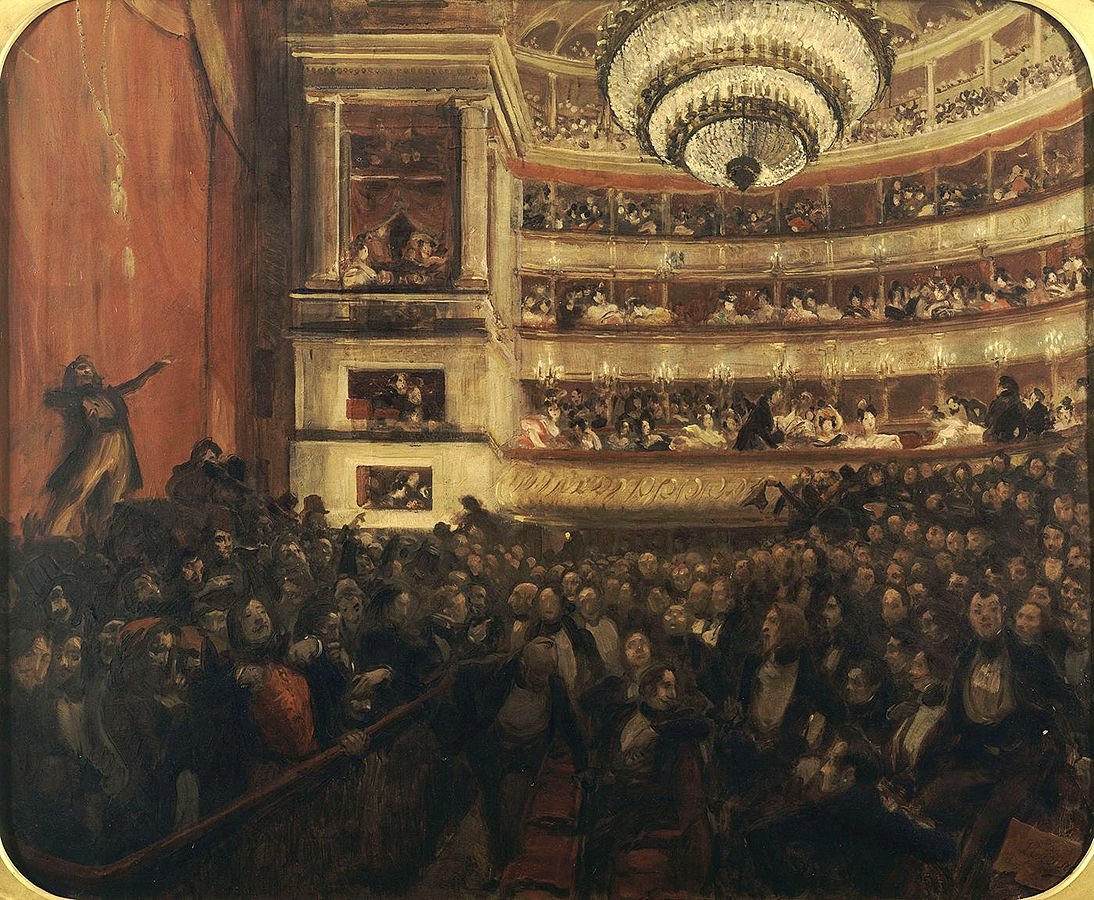
Paul-Albert Besnard (1849-1934)
La première de Hernani à la Comédie-Française en 1830
The first performance of Hernani (The Battle of Hernani)
Oil on canvas, 1903
Paris, Maison Victor Hugo
La Comédie-Française
The Palais-Royal has always had a theater, formerly located at the corner between rue de Valois and rue Saint-Honoré. At the time of Richelieu Pierre Corneille was briefly a member of the Cardinal's group of Five Authors. During the regency of Anne of Austria and the reign of Louis XIV the theater was used by Molière.
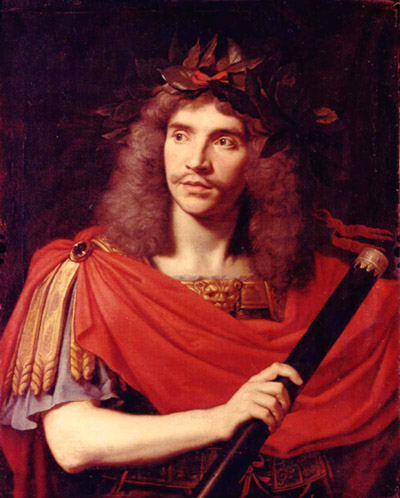
Nicolas Mignard,
Portrait of Molière as "Julius Cesar"
(in "La mort de Pompée" by Pierre Corneille),
oil on canvas, 1658
Collection of the Comédie-Française
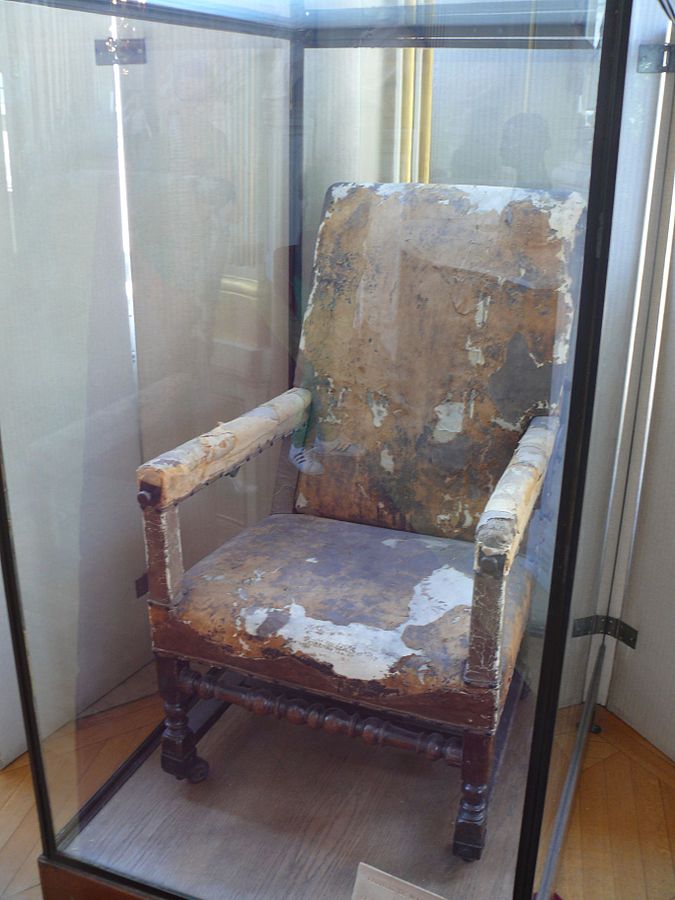
Armchair of Molière at the Comédie-Française
Photo: Peter Potrowl (CC), Wikimedia
It was on this stage that Molière, playing the lead role in Le malade imaginaire (The Imaginary Invalid), suffered a malaise that proved to be fatal. On February 17, 1673, after the show, he was taken to his apartment at No. 40 rue de Richelieu (the street parallel to rue Montpensier), where in less than hour, he breathed his last. According to some accounts, the public, thinking he was still playing his role, applauded. A plaque on the facade of No. 40 commemorates the artist and a few steps away on rue de Richelieu, a monumental sculpture overlooking a fountain pays tribute to his theatrical genius. Earlier excommunicated for his refusal to renounce acting, Molière was not blessed with the last sacraments. However, in deference to his reputation, the Archbishop decided to grant him a Christian burial at the St. Joseph Cemetery, on the condition that the ceremony be organized at night and with utmost discretion. Having been exhumed in 1792 by the Revolution, the remains of Molière's remains were transferred, in 1817, to Père Lachaise Cemetery in 1817, where they still lay today.
Just opposite Molière’s home, on 39 rue de Richelieu, lived Denis Diderot, philosopher and writer of the 18th century.
Molière's troupe, dismissed from the Palais-Royal but retaining nonetheless the title of The King's Troupe, continued under the leadership of his wife Armande Béjart, who merged it with the troupe of the Marais and then in 1680, with the Theatre of Burgundy, giving birth to the Comédie-Française. Distinguishing itself from the Commedia Italiana, the Comédie-Française settled in the Guenegaud Theatre on rue Jacques Callot.
After Molière's death, the King assigned the use of Théâtre Richelieu to the Court's composer, Jean-Baptiste Lully, who creates the first French opera house.
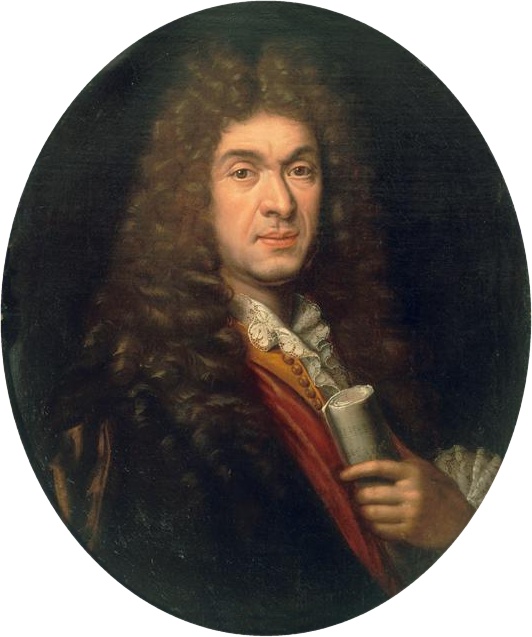
Nicolas Mignard
Portrait of Jean-Baptiste Lully, Secretary of the King and superintendent of his music
In 1771, a few years after its reconstruction under Philippe Le Gros, the opera hall was destroyed once again by fire. His son, Louis-Philippe d'Orléans, future Philippe Égalité, had the French Theatre built by moving the theater hall to the other side of the Palace. It was designed by the architect Victor Louis between 1786 and 1790, restored by the city of Paris in 1861 and, since 1799, it houses the Comédie-Française.
Philippe Égalité maintained the theatrical tradition of the palace, but opened it also to the bohemian life. In order to ensure a return on his investment in the extension of the Palace, he rendered it fashionable, capable of attracting a very variable audience, from the aristocracy to all other social classes.
The "Kiosque des Noctambules" (Kiosk of the Night Owls)
On Place Colette, contrasting with the classicism of the palace, you can discover the originality of the entrance to the Metro station called Kiosk of the Night Owls, an entrance designed in 2000 by the artist Jean-Michel Othoniel for the centenary celebrations of the Paris Metro. An aluminum structure on which are strung large blown Murano glass beads produced by Salviati forms two domed crowns, a red one for the day, a blue one for the night.

Jean-Michel Othoniel, Le Kiosque des noctambules
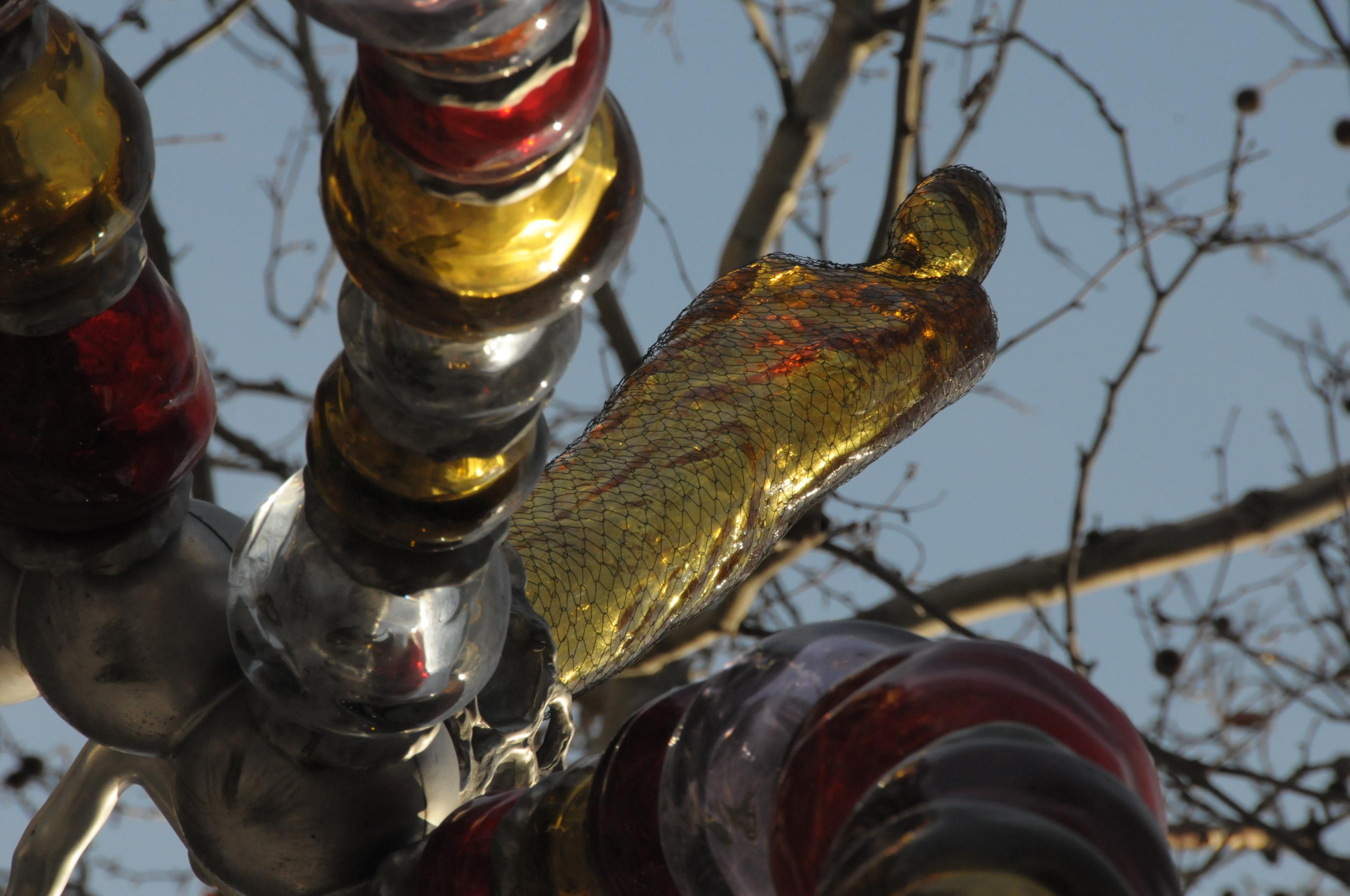
Jean-Michel Othoniel, Le Kiosque des noctambules, detail
Topped with a king and a queen, they evoke as much the stay of Anne of Austria and Louis XIV, as the nightlife of Colette, the writer and twice tenant of the palace in the first half of the 20th century. With their kitsch and playful character, these domes also recall the venue of the fairground, held in the gardens in the 18th century. Are they child rattles or a Walt Disney fancy? However, this entrance is no less a tribute to Hector Guimard, the famous architect of the of the first metro entrances built in 1900, who was also the initiator of the Art Nouveau style in the late 19th century. With the same sense of originality, Othoniel produced a work that transforms a traveler's daily routine into a festive venue. According to Othoniel, the political role of the artist is sublimate the city.
